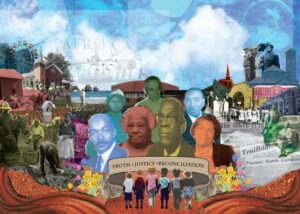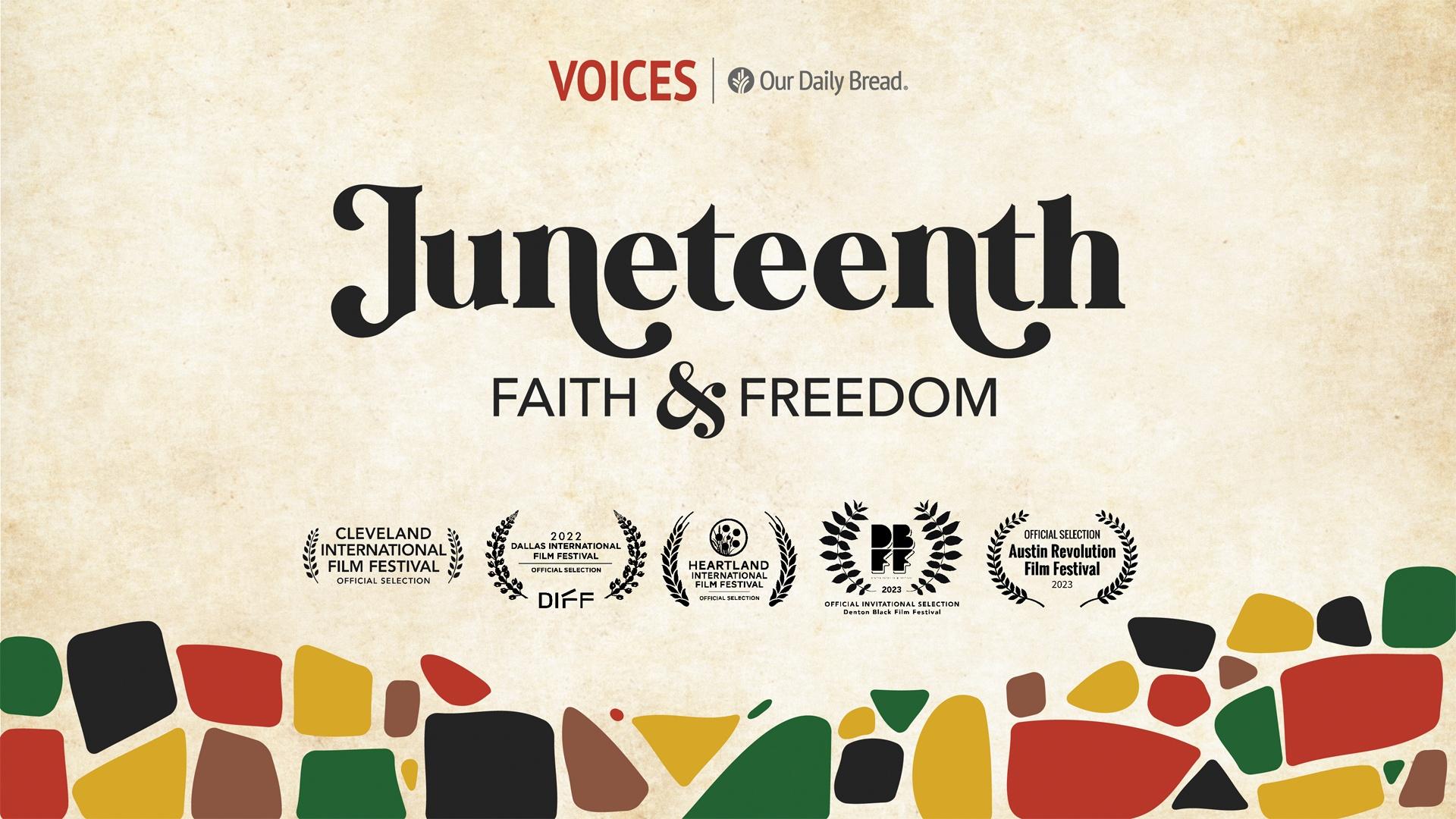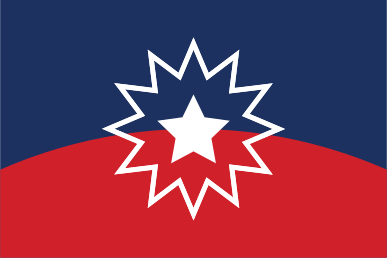Have you heard of a holiday called Juneteenth? It is an important holiday in the United States that traces its roots to slavery. Its name is a combination of the month and day of its celebration, June (nine)teenth. It celebrates the end of chattel slavery in the United States.
The history of the Juneteenth holiday began during the Civil War. On June 19, 1862, President Abraham Lincoln signed "An Act to secure Freedom to all Persons within the Territories of the United States." The act banned slavery in the Union (except as the punishment for a crime). Slavery was still widespread and protected within the Confederacy. On September 22, 1862, Lincoln issued the preliminary Emancipation Proclamation. The Proclamation declared freedom to all enslaved people within the Confederacy. The Proclamation would take effect on January 1, 1863. This only applied to Union-controlled areas within the South. Enslaved people attempting to escape slavery without Union protection were not safe. They were often captured and returned to their enslaver(s). Chattel slavery was not abolished in the United States until the Thirteenth Amendment to the Constitution.
Congress and Lincoln agreed to add the Thirteenth Amendment to the Constitution by February 1, 1865. It would not go into effect until the states ratified it later that year. The Amendment stated "Neither slavery nor involuntary servitude, except as a punishment for crime whereof the party shall have been duly convicted, shall exist within the United States, or any place subject to their jurisdiction." On March 3, 1865, Lincoln signed an order that granted freedom for wives and children of Black soldiers. Slavery still existed. The Thirteenth Amendment was not yet ratified and the Civil War was ongoing. On June 19, 1865 Union troops arrived in Galveston, Texas to enforce General Order No. 3. The order enforced the Emancipation Proclamation in Texas. It also stated that all 250,000 enslaved people in the state were free. Texas was the furthest and most remote edge of the Confederacy. Enforcing emancipation here was challenging and significant. The states ratified the Thirteenth Amendment on December 6, 1865. This abolished chattel slavery in the United States. December 31, 1865 and January 1, 1866 marks the first formal Freedom Day celebrations. Beginning in 1866, formerly enslaved people celebrated June 19th annually as their freedom day. Many of the first celebrations of Juneteenth took place in Texas. Celebrators observed the holiday in churches and Freedmen's Bureaus.
The Juneteenth holiday also observes special colors and symbols. The symbolism of the color red is featured throughout Juneteenth. Red refers to the West African traditions of strength, spirituality, bloodshed, death, and life. According to the New York Times, "Red velvet cake, watermelon, Texas Pete hot sauce, strawberry pie and hot links are several red foods commonly served at Juneteenth celebrations." Alongside those foods, red beverages are featured from Juneteenth's earliest celebrations. Drinks like kola nut tea and bissap (hibiscus flower drink) are traditional Juneteenth staples. Today, hibiscus and fruit punch are more common.
Another important cultural artifact of Juneteenth is the Juneteenth flag. Activist Ben Haith created the flag in 1997. It displays several symbols. The design includes the colors red and blue shaped in an arc with a white central star surrounded by a burst design. The colors are important because enslaved Black people never forgot their legacy as Americans during enslavement. Most commonly, the red of the flag is used to represent the blood that enslaved people shed during slavery. The star has a double meaning. The first is an homage to Texas, nicknamed the Lone Star State. The second meaning symbolizes freedom for all enslaved people in all fifty states. The burst around the star symbolizes a new star which was the rebirth of African Americans in Texas and the United States after Juneteenth. Finally, the arc symbolizes a new "horizon" filled with promise and new opportunities for all Black people. According to the National Juneteenth Observation Foundation, the Juneteenth flag was first flown in 2000, at Boston's Roxbury Heritage State Park.
As a former slave state, Juneteenth is also an important holiday in North Carolina. The state offers a few different celebrations and reflections of the holiday. The first official Juneteenth celebrations in North Carolina were hosted in Charlotte on June 19, 1977.
In 1997, a local North Carolina business owner, Pape S. NDiaye, created a large-scale Juneteenth Festival for Carolinas to celebrate the holiday. It began as a small celebration in its first year. By the 150th anniversary of Juneteenth in 2015, over 20,000 people gathered at House of Africa (located at 1215 Thomas Avenue in Charlotte) to celebrate the holiday. Celebrations featured food trucks, Black-owned businesses, artists, musical performances, speeches, a parade, and a tribute. Juneteenth celebrations in North Carolina expanded in June 2018 with the Charlotte Durag Fest. The festival showcases Black cultural artifacts and hosts presentations about Juneteenth.
Other areas of North Carolina also show their support for Juneteenth. The Triad Juneteenth Celebration was first celebrated in 2005. It hosts patrons from Winston-Salem, Greensboro, High Point, and other surrounding areas. Maya Angelou made an appearance at the 2006 festival. She spoke at a panel hosted at the Winston Salem Urban League conference hall titled "Race Relations and Bridging the Gap."
Juneteenth's status in North Carolina became more official in 2007. Michael Easley, then Governor of North Carolina, signed House Bill 1607 on August 23, 2007. The law established that Juneteenth National Freedom Day would be observed throughout the state if it was recognized as a national holiday. State Representative Larry Womble was instrumental in securing the holiday's recognition in North Carolina. On August 23, 2007, North Carolina became the 26th state to recognize Juneteenth as a state holiday.
Juneteenth was finally recognized nationally on June 19, 2021. President Joe Biden signed S.475 - Juneteenth National Independence Day Act into law. The new law established Juneteenth as a federally recognized holiday. The same day, North Carolina Governor Roy Cooper signed a proclamation for Juneteenth day in the state of North Carolina. The next year, Governor Cooper issued Executive Order No. 262, which established Juneteenth as "A Day Of Cultural, Religious, Or Personal Significance."
As of 2023, Juneteenth is widely celebrated throughout North Carolina. A significant celebration was held in Pittsboro on June 19, 2023. The community of Pittsboro gathered to remember Black history and culture with the unveiling of a Juneteenth Mural. It depicts notable Black people of Chatham County's past. It includes a "midwife, sheriff, Black History Program advocate, teacher, farmer and school principal." The mural was created by Chatham County's Community Remembrance Coalition with the help of artist David Wilson. The site of the mural is George Moses Horton Middle School in Pittsboro. It is known as the Truth, Justice and Reconciliation Mural.
Glossary:
- Chattel slavery: the system of slavery that existed in the United States. It allowed people to be bought, sold, and traded as property
- Union: During the Civil War, the (mostly) northern states in the United States that did not secede
- Confederacy: During the Civil War, the southern states in the United States that did secede
- Emancipation Proclamation: A government order that declared freedom to all enslaved people within the Confederacy
- Freedmen's Bureaus: Created during the Civil War to assist free people transition out of slavery
Guided Reading Questions:
- Which Amendment to the Constitution banned chattel slavery?
- What Texas city is considered the birthplace of Juneteenth?
- Name one food or drink that is commonly served on Juneteenth.
- Which North Carolina business owner created the Juneteenth Festival for Carolinas?
- Where is David Wilson's Truth, Justice and Reconciliation Mural located?
References:
Beck, Lillie. "How to Celebrate Juneteenth from Home." Redandblack.com. https://www.redandblack.com/culture/how-to-celebrate-juneteenth-from-hom... (accessed August 30, 2023).
Haley, Jae. "Discussion Focuses on Gap in Race Relations - Poet Maya Angelou Anchors Round Table at the Urban League." Winston-Salem Journal, June 16, 2006. https://infoweb.newsbank.com/apps/news/document-view?p=NewsBank&docref=n... (accessed August 30, 2023).
"History of Juneteenth," Juneteenth.com. https://www.juneteenth.com/history/ (accessed August 30, 2023).
"History of Juneteenth." The Juneteenth Foundation. https://thejuneteenthfoundation.com/history-of-juneteenth/ (accessed August 30, 2023).
"Juneteenth." Smithsonian National Museum of African American History and Culture. https://nmaahc.si.edu/juneteenth (accessed August 30, 2023).
"Juneteenth History." Triad Cultural Arts, Inc. https://triadculturalarts.org/index.php/juneteenth-history/ (accessed August 30, 2023).
"Juneteenth: The History of a Holiday." The New York Times. https://www.nytimes.com/article/juneteenth-day-celebration.html (accessed August 30, 2023).
Norman-Cox, Donald J. Juneteenth 101: Popular Myths and Forgotten Facts. Arising Together Publishing: Denton, Texas, 2020.
Taylor, Nicole. "Hot Links and Red Drinks: The Rich food Tradition of Juneteenth." The New York Times. June 13, 2017. https://www.nytimes.com/2017/06/13/dining/juneteenth-food-slavery-abolit... (accessed August 30, 2023).
"The Historical Legacy of Juneteenth." Smithsonian National Museum of African American History and Culture. https://nmaahc.si.edu/explore/stories/historical-legacy-juneteenth (accessed August 30, 2023).
Willard, Keenan. "Local history of Juneteenth: How did slavery end in NC?" WRAL News. June 17, 2022. https://www.wral.com/story/local-history-of-juneteenth-how-did-slavery-e... (accessed August 30, 2023)


 Juneteenth: Faith & Freedom Documentary
Juneteenth: Faith & Freedom Documentary